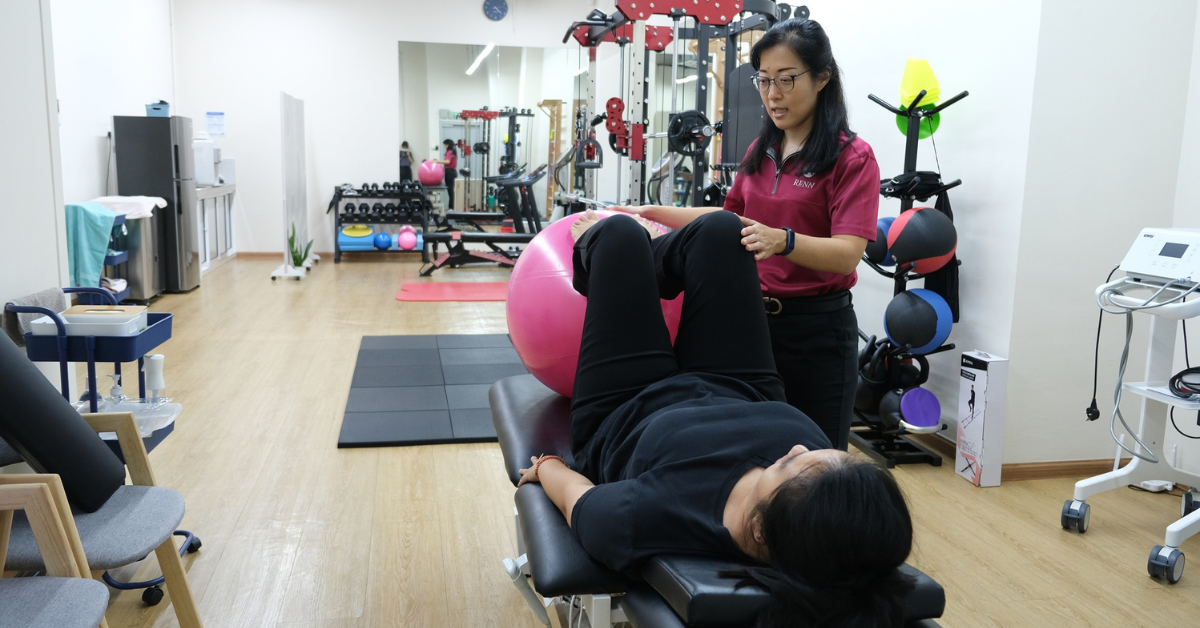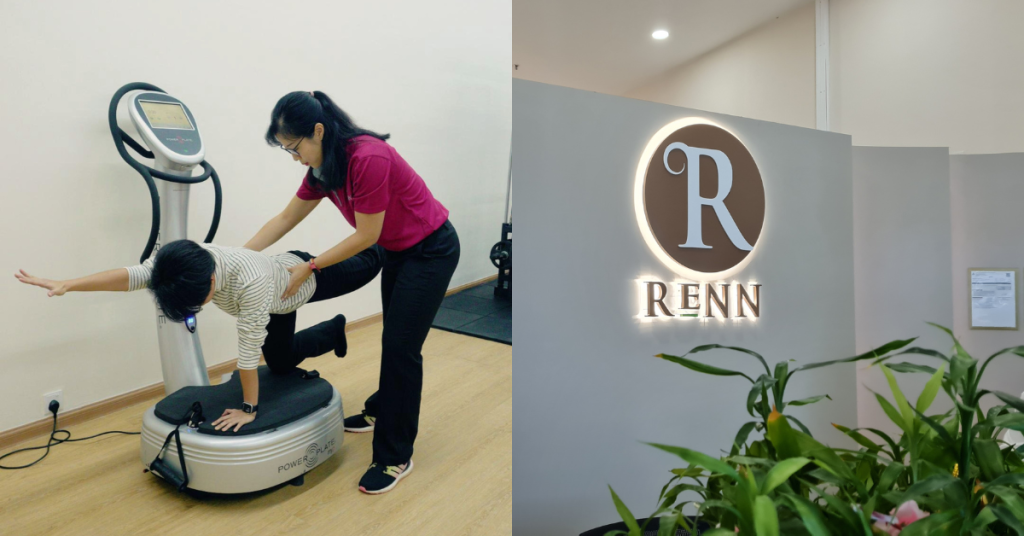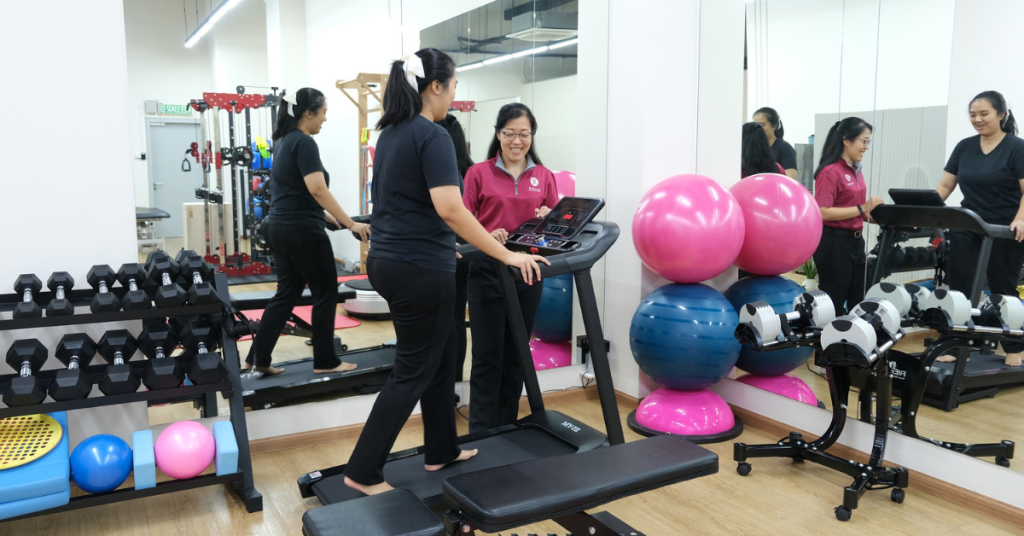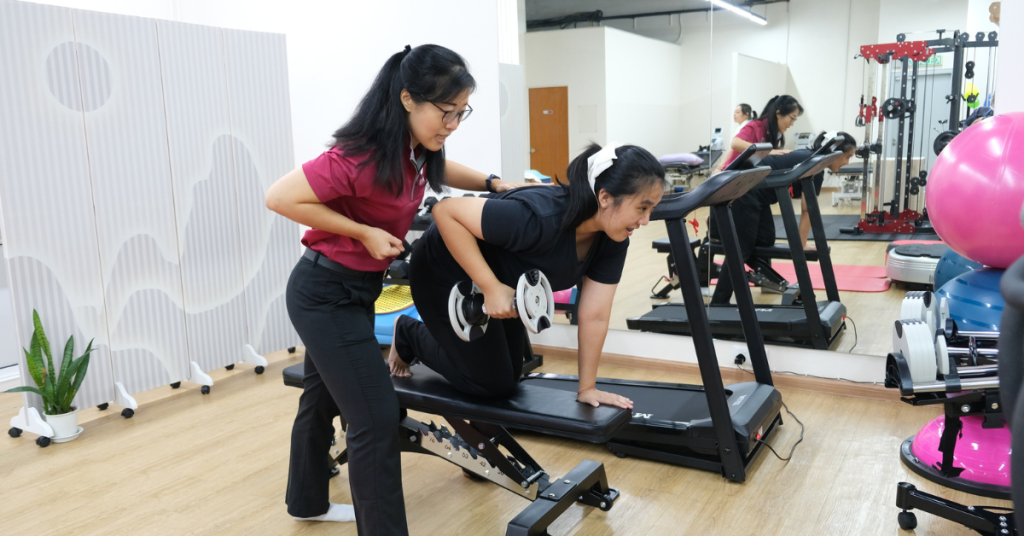How does physiotherapy work? We asked a M’sian therapist.

[Written in partnership with RENN Asia Wellness, but the editorial team had full control over the content.]
When you find yourself physically injured, chances are you’ll see a physiotherapist who will help you regain your range of movement in a healthy way.
And yet, they don’t always get the credit they deserve, mostly because people aren’t fully aware of what they actually do.
To set the record straight, we spoke to a physiotherapist at RENN Asia Wellness in KL.
Meet the physio
Speaking to Vulcan Post is Khor Jo Eve, who describes herself as “a true-blue physiotherapist” who has been in the field for 12 years now.

“I became interested in physiotherapy after watching my mum undergo sessions of her own when she suffered from a herniated disc,” she shared with Vulcan Post.
Graduating from MAHSA University KL with a physiotherapy degree from Northumbria University, Jo Eve is now the Head of Physical Wellness Department at RENN Asia Wellness. She works closely with her colleague, Anne, who is the Head of Physiotherapy Department.
For those who don’t really know what physiotherapy entails, Jo Eve explained in simple terms: “It is a treatment that helps people move better and feel less pain, especially after an injury, illness, or surgery.”
Physiotherapy usually involves exercises, hands-on care and advice to help strengthen the body, improve movement, and prevent recurring issues. Physiotherapists work with people of all ages to help them stay active, independent, and healthy.
What does it take to be a physiotherapist in Malaysia?
With physiotherapy being a field of complementary medicine, you might think that it’s not really a regulated practice. And while it might not be monitored the same way as conventional medicine, there are actually regulatory bodies that govern this field, too.
And of course, you do need to have specific qualifications to work as a physiotherapist.

Jo Eve shared that in Malaysia, a diploma is the entry-level qualification to become a physiotherapist.
“However, in recent times, to keep abreast with the ever-evolving healthcare, the government has slowly but surely been shifting the benchmark toward requiring a degree for any practising physiotherapist,” she clarified.
She also shared that herself and Anne both hold full-fledged physiotherapy degrees.
Who should go for it?
“Physiotherapy is only for those recovering from surgery or serious injuries.”
This is a misconception that many have about physiotherapy, but it’s just that—a misconception.
Jo Eve emphasised that physiotherapy helps with many everyday issues, not only major injuries. It is for anyone who wants to move better, feel stronger, and live with less pain.
“Physio also serves as a good wellness plan for a high quality of life, especially for the elderly. Muscle wasting is a huge problem for the elderly and is a huge contributor to the loss of quality life,” Jo Eve said.

And it’s not just for the elderly. Youngsters in this era can also greatly benefit from physio due to prolonged sitting and sedentary lifestyles today.
“Physiotherapy is not just reactive; it can be used proactively to help prevent injuries, recuperate, restore and maintain high-quality physical health.”
Jo Eve shared that many of her clients often come in due to lower back pain, often due to poor posture, lifting injuries, or disc problems. People with neck pain caused by muscle tension, whiplash, or poor workstation setup can also benefit from physiotherapy.
Other issues they address include:
- Shoulder problems: Frozen shoulder, rotator cuff injuries, or impingement.
- Knee pain: including ligament injuries (e.g., ACL), meniscus tears, and patellofemoral pain.
- Ankle sprains and foot pain: Often from sports, falls, or overuse.
- Tennis elbow or golfer’s elbow: Overuse injuries affecting the elbow tendons.
- Hip pain: Related to bursitis, labral tears, arthritis, or overuse.
- Post-fracture rehabilitation: Helping restore strength and movement after a bone break.
- Postural problems: Causing muscle imbalances, tension, or pain.
- Rehabilitation after orthopaedic surgeries: Such as joint replacements or ligament repairs.
“Many common everyday habits contribute to pain or injuries that physiotherapists see over and over again,” Jo Eve said. “These may seem harmless but can lead to muscle imbalances, joint strain and poor movement patterns over time.”
A few common habits are poor posture at work/home, incorrect lifting, repetitive movements without a break, improper footwear, sleeping in awkward positions and overtraining or poor exercise technique.
So, be sure to notice these habits or work with a physiotherapist to address them before your issues worsen.
Working with other modalities
Nowadays, a growing awareness of physio has led to more centres opening up.
But one way that RENN’s physiotherapy practice stands out is its involvement of other modalities and cutting-edge equipment.

As Jo Eve pointed out, RENN Asia is the only centre in Malaysia offering a combination of nutritional and functional medicine (NFM), physiotherapy, and traditional Chinese medicine (TCM) into one treatment plan.
The result is a more holistic and personalised treatment package where clients can enjoy physio while receiving nutrients-based prescriptions from NFM and or herb-based healing under TCM.
“The addition of NFM and TCM elements will provide a much deeper comprehension of the clients’ conditions leading to improved recovery time and better regeneration of the physical body compared to just physiotherapy alone,” she pointed out.
“When all three professionals communicate and align our plans, recovery becomes more achievable as the patient gets fully supported.”
How does it work?
When it comes to physiotherapy, know that there’s no “one size fits all” approach.
That’s why for Jo Eve and Anne, sessions begin with a one-on-one consultation and thorough assessment to determine the root cause of the problem.
This involves asking about the patient’s symptoms, lifestyle, medical background, and goals. The assessment also involves observing posture, range of motion, strength and flexibility.
“Besides physio assessment, clients will undergo simple wellness/vitamins assessment to check for any deficiency,” she added.
From there, a specific treatment plan is curated, communicated, and carried out.
The treatment may include hands-on therapy, exercise therapy, modalities (if needed), and education for home exercises.

“Adjustments are made based on the patient’s progress,” Jo Eve said. “Lastly, we would plan for gradually tapering visits and maintaining results.”
Will it really fix you?
Going for a few sessions of physiotherapy won’t completely “cure” your issues, though.
Jo Eve agreed that setting realistic expectations would keep clients more engaged and motivated, so it’s important to acknowledge that.
Realistic outcomes clients can expect include a better understanding of their condition, noticeable pain reduction, improved confidence with movement, increased energy, flexibility and mobility, as well as stronger and more balanced muscles and joints.
“Essentially, one is not just healing but learning to protect one’s body for life. Recovery is not always linear,” Jo Eve shared. “There may be ups and downs along the way, but that is perfectly normal. Progress is about steady improvement over time, not perfection overnight.”
- Learn more about RENN Asia Wellness here.
- Read other articles we’ve written about wellness here.
Featured Image Credit: RENN Asia Wellness






